This post may contain affiliate links. See our disclosure policy.
Nick’s Authentic Italian Spaghetti recipe comes straight from Italy. Tomatoes, basil, onions, and carrots flavor the meat to make the perfect sauce!
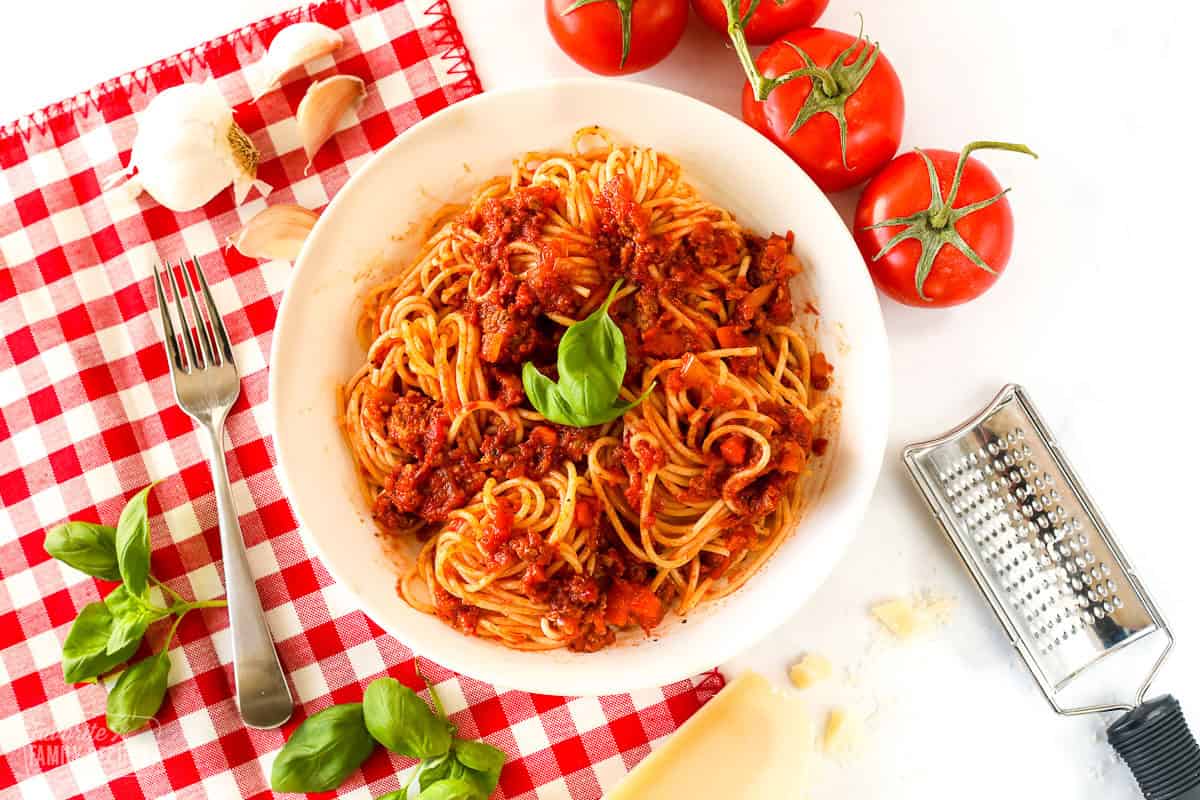
Featured with this recipe
- Ragu, Bolognese, Marinara, and Spaghetti Sauce
- What Meat Is Best For Spaghetti Meat Sauce?
- What Tomatoes Are Best For Homemade Spaghetti Sauce?
- Ingredients
- Tips For Making Italian Spaghetti
- Frequently Asked Questions
- What To Serve With Spaghetti
- How to Make Authentic Italian Spaghetti
- Authentic Italian Spaghetti Recipe
You can never go wrong with Italian-inspired meals, especially a good, hearty pasta. We love using fresh, garden tomatoes for our spaghetti sauce, and will often make homemade canned spaghetti sauce when we have an abundance of tomatoes so we can enjoy the bright, fresh flavor all year long.
This is an actual, Italian spaghetti recipe that comes straight from Italy. In our family, we lovingly call this recipe “Nicco’s Sghetti”. My husband’s brother, Nick, spent two years in Italy and brought home all sorts of delicious, authentic Italian recipes, including this one! Thanks Nick for sharing this recipe! I don’t think I will ever be satisfied with any other spaghetti!
Ragu, Bolognese, Marinara, and Spaghetti Sauce
The sauce for this spaghetti is a true Italian “ragu”. So what exactly does that mean? It is easy to get confused with all of the different kinds of “red” sauces for spaghetti. What’s the difference? IS there a difference? Truth is, they are all similar and some are simply variations of one another, but they have their differences. Allow me to explain…
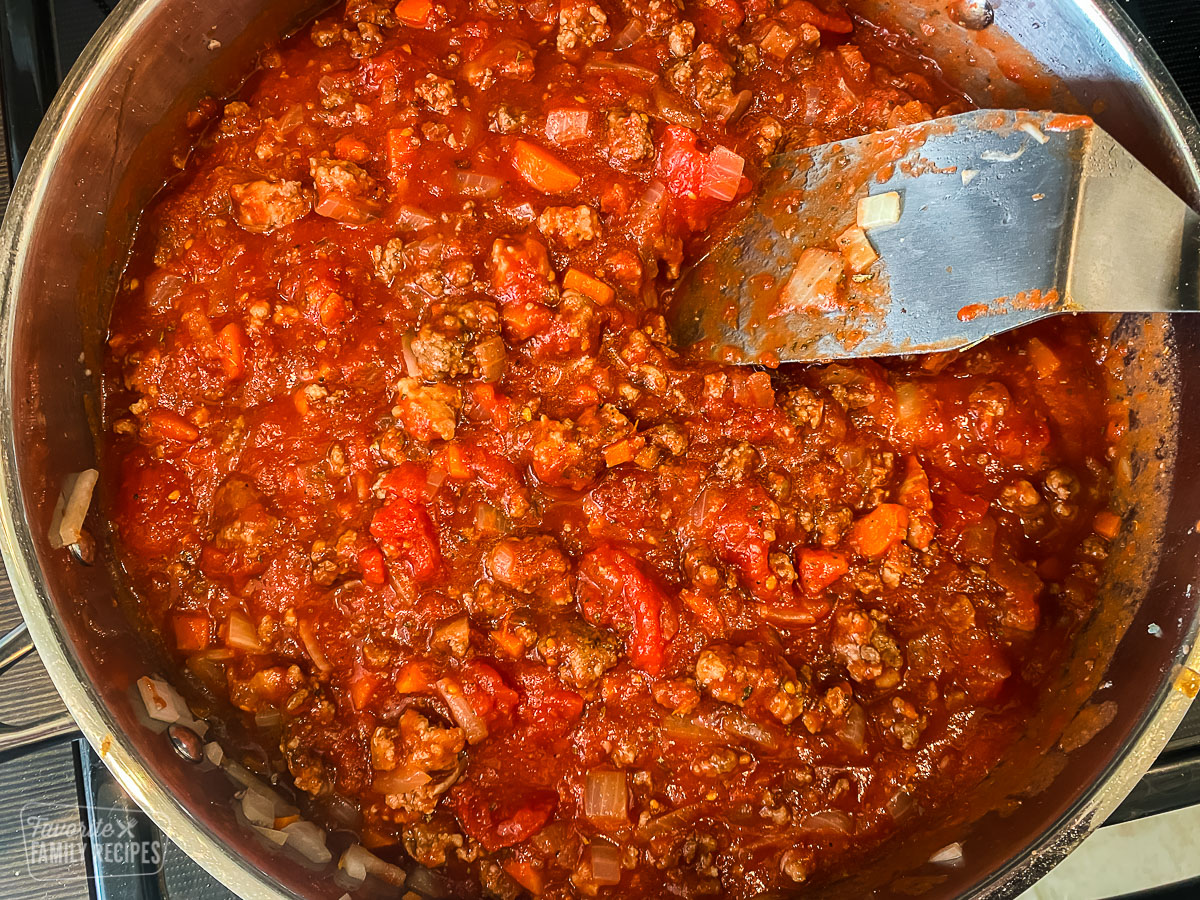
Here is a quick lesson on common spaghetti sauces:
- Ragu – Ragu is a meat-based sauce made with sautéed vegetables and simmered slowly for hours in tomato, broth, wine, and/or milk. There are two common variations of ragu: Ragu alla Bolognese and Ragu alla Napoletana.
- Ragu alla Bolognese (aka Bolognese) – From the Bologna (Northern) region in Italy. Uses less tomatoes and white wine. Traditionally served with wide pasta or lasagna.
- Ragu alla Napoletana – From the Naples (Central/Southern) region in Italy. Uses more tomatoes and red wine. Traditionally served with thinner pasta, such as spaghetti.
- Pomodoro Sauce – (also known as Sago di Pomodoro) is a simple tomato sauce that is smooth and flavorful. It is another great authentic sauce for spaghetti that we got from Italy!
- Marinara – Marinara is a simple tomato sauce with common Italian seasonings. Unlike the sauces above, marinara is heavily tomato based and does not contain meat. Though the sauce is mostly tomatoes, it may or may not include onion or other vegetables. Marinara is bright, acidic, and light, as opposed to the above sauces which are more rich, hearty, and complex.
- Spaghetti Sauce – Spaghetti sauce is an Americanized term for any kind of red sauce that is served over noodles. It can include any of the sauces above. Be sure to try our Homemade Canned Spaghetti Sauce. This is our favorite way to make our fresh, garden tomatoes last all year!
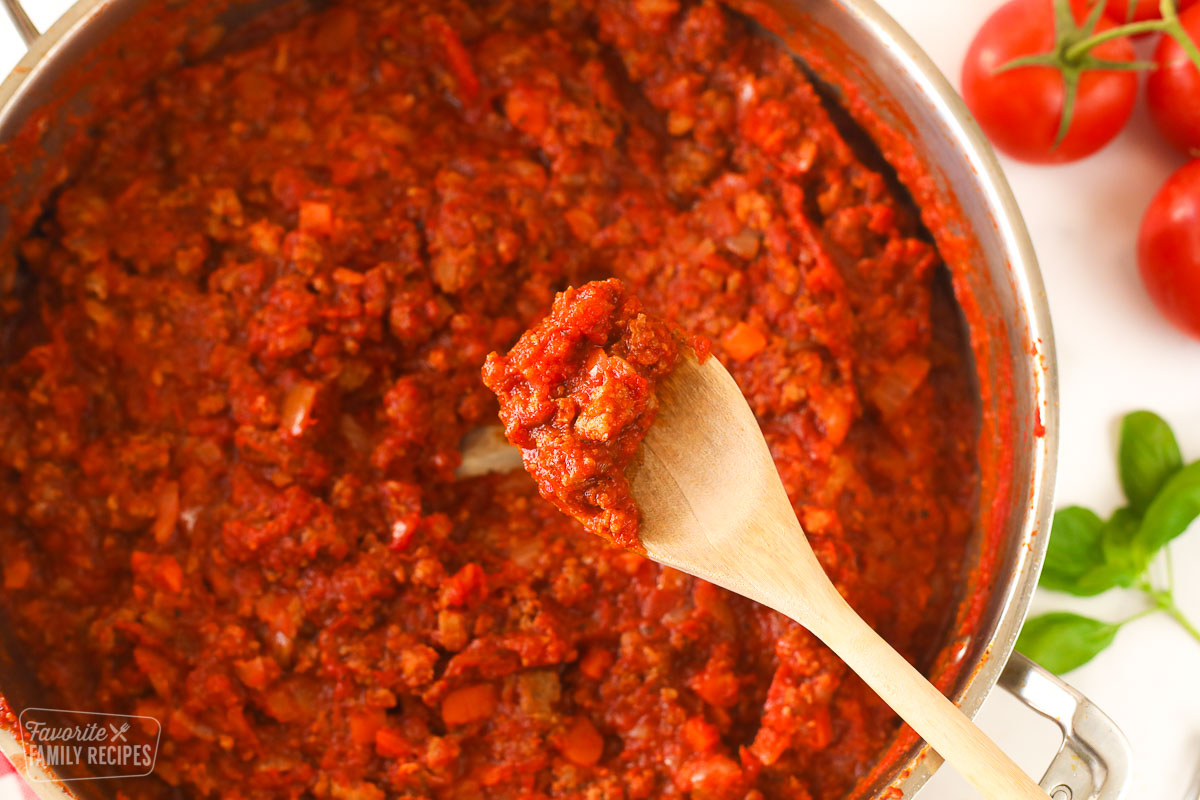
What Meat Is Best For Spaghetti Meat Sauce?
Spaghetti sauce is not limited to just one kind of meat. Here in the U.S., we often think spaghetti is limited to meatballs or ground beef, but in Italy you can find ragu using braised beef, lamb, chicken, fish, veal, or pork. Depending on what region in Italy you are visiting (or using recipes from), meat can be simmered in large portions and then removed and served separately from the pasta and sauce, or the meat can be cut or broken into smaller pieces and served in the sauce. Either way, the meat is simmered in the sauce to give the sauce that deep, rich, meaty flavor.
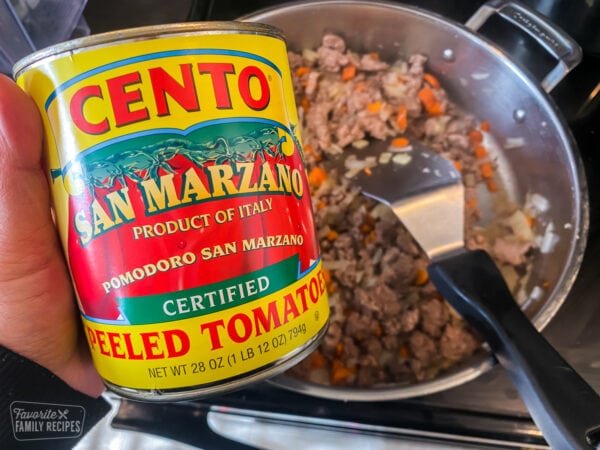
What Tomatoes Are Best For Homemade Spaghetti Sauce?
If using fresh tomatoes, you can never go wrong with a good Roma tomato for spaghetti sauce. Romas are good, meaty tomatoes with few seeds and cook down well into a sauce after they are heated. Dip them in boiling water for 30 seconds to make removing the skins easier before cooking. If using canned tomatoes, my VERY favorite are San Marzano tomatoes. These tomatoes come straight from Italy and they are by far the best. I like getting the 28 oz. can of the whole, peeled tomatoes and crushing them myself with a spatula after they soften and simmer down. They are much better than using crushed tomatoes.
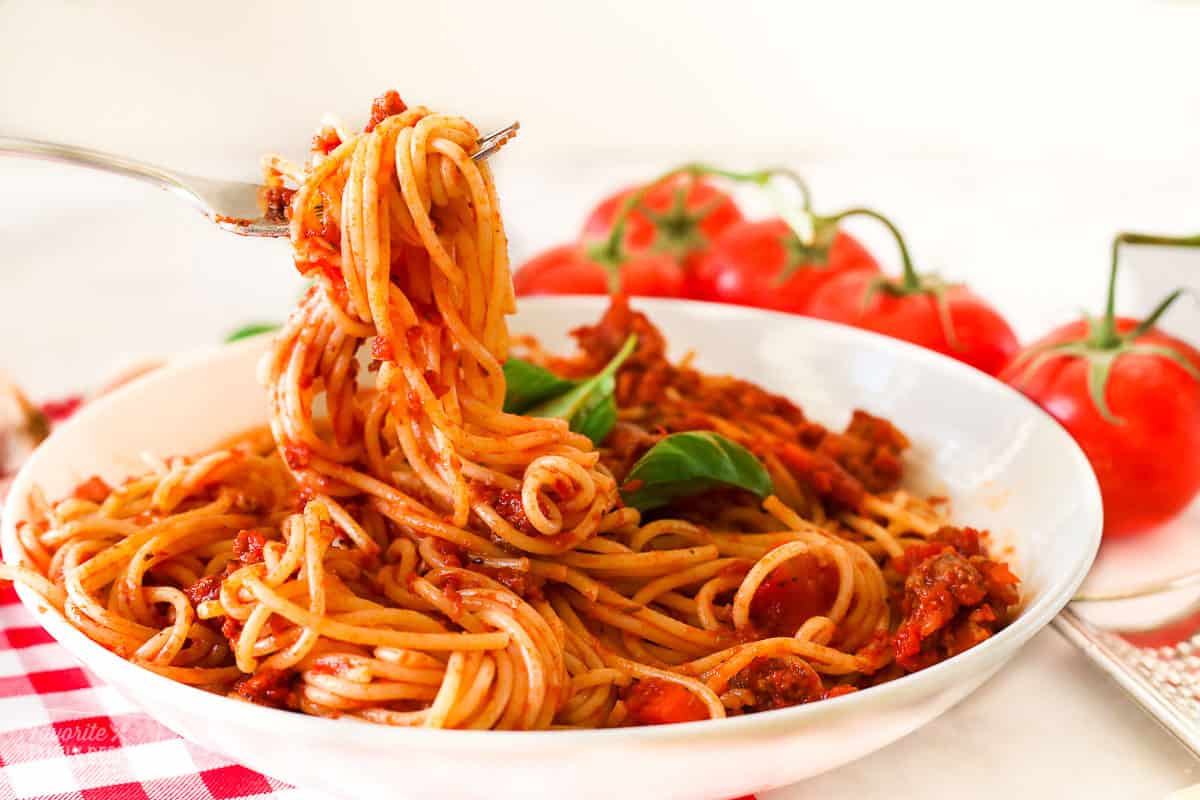
Ingredients
- Extra virgin olive oil
- Onion
- Carrot
- Ground beef
- Ground pork – optional
- Tomatoes
- Basil leaves
- Sugar
- Kosher salt
- Pepper
- Beef broth – if needed, to taste
- Spaghetti noodles
Tips For Making Italian Spaghetti
Learning to get the perfect spaghetti and sauce takes some practice but once you get it down, it’s easy! Here are some tips for making the perfect Italian spaghetti:
Tips for cooking the spaghetti noodles
- Salt the pasta water. Not just a pinch. You want to add a good amount, enough that when you taste the water you can distinctly tell that there is salt there.
- Stir While Cooking: Stir the pasta immediately after adding it to the boiling water to prevent sticking. Stir occasionally during cooking to ensure even cooking.
- Cook Al Dente: Follow the recommended cooking time on the pasta package, but taste-test a minute or two before it’s supposed to be done. The pasta should be firm to the bite (al dente).
- Save Pasta Water: Before draining the pasta, reserve a cup of the pasta cooking water. It’s rich in starch and can be used to adjust the consistency of your sauce.
Authentic spaghetti sauce tips
- Use Good Tomatoes. If you can’t peel and dice your own fresh garden tomatoes, whole canned D.O.P. San Marzano tomatoes (from the grocery store, look for the DOP label) are the best substitution.
- Let It Simmer. The best spaghetti sauces take time. The longer you can let those flavors reduce and simmer together, the better. In many Italian kitchens, the sauce will simmer all day long before being served. It will get nice and thick without having to add tomato paste!
- Use Ground Pork. You can use all pork or a mixture of pork and beef.
- Red Wine (optional): add a splash of red wine to the meat after browning but before adding the other ingredients for a new dimension of flavor.
- Toss It All Together: In Italy (at least in the region where Nick lived), they don’t pour the sauce over the noodles. It is all tossed together and then served!
- Fresh Herbs: Use fresh herbs like basil, oregano, and parsley to garnish and flavor your pasta. Add them just before serving to preserve their freshness.
- Balance the Sauce: Taste your sauce and adjust the seasoning as needed. You might need a pinch of sugar to balance acidity or some salt and black pepper for flavor.
- Cheese: Grate or shave fresh Parmesan or Pecorino Romano cheese over the pasta. This adds a salty, nutty flavor that complements the sauce.
- Don’t Over-Sauce: The sauce should coat the pasta, not drown it. Start with a small amount and add more as needed.
- Finish in the Pan: Finish the pasta in the pan with the sauce for a minute or two. This allows the flavors to meld. Use a little reserved pasta water if needed to thin.
- Serve Hot: Serve your Italian spaghetti piping hot for the best taste and texture.
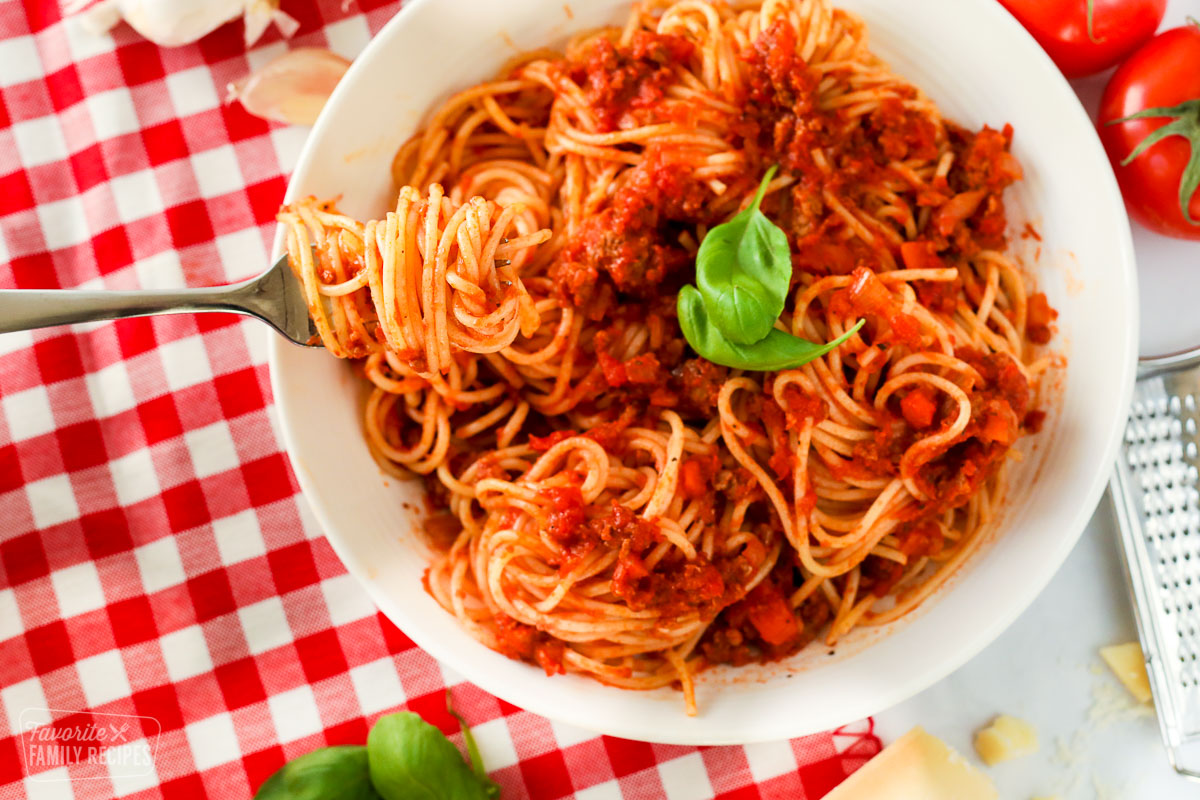
Frequently Asked Questions
Adding a pinch of sugar to your pasta sauce creates a more balanced sauce by cutting the acidity of the tomatoes. The acidity of tomatoes varies depending on whether or not they are canned or fresh, the time of year it is, and the type of tomato they are. Just give your sauce a taste and stir in some sugar accordingly only if needed.
While I cannot speak for all Italians, the general consensus is no, they do not. Putting oil in the water makes the pasta slippery and thus, makes it harder for the sauce to stick to the pasta when it is done cooking. Instead, they will boil the pasta in a very large pot of water (so there is plenty of room in the pot, so nothing sticks to anything else) and will sometimes salt the water.
Typical American spaghetti sauce comes in a jar and is a complex blend of spices, flavors and additives combined with a tomato base. Authentic Italian spaghetti sauce (whether it be marinara, ragu, or pomodoro) is often homemade and starts with fresh tomatoes combined with a small handful of basic, fresh ingredients.
Read Next: Spaghetti Casserole
What To Serve With Spaghetti
When we were growing up, our mom would almost always serve spaghetti with peas. You can also serve your spaghetti with a side salad, or one of these tasty side dish ideas:
How to Make Authentic Italian Spaghetti
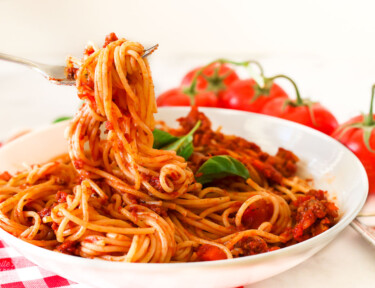
Authentic Italian Spaghetti
Video
Equipment
- Large Skillet (we love these cast iron ones from Camp Chef)
Ingredients
- 1 tablespoon olive oil
- 1 small onion finely chopped
- 3 carrots peeled, chopped
- 4 cloves garlic (crushed or minced)
- 1 pound ground beef
- 1/2 pound ground pork (optional)
- 1 1/2 pounds tomatoes (fresh peeled and diced tomatoes or canned San Marzano tomatoes)
- 6 fresh basil leaves chopped (or 1-2 teaspoons dried basil)
- 1/2 teaspoon sugar
- 1 teaspoon Kosher salt
- 1/2 teaspoon pepper
- beef broth (if needed, to taste, you can also use pasta water or a splash of red wine)
- 1 pound spaghetti noodles
Instructions
- Heat oil on medium heat in a large, deep skillet. Add onion, carrots, and garlic and sauté for 1 minute. Add ground beef and pork and continue to cook.
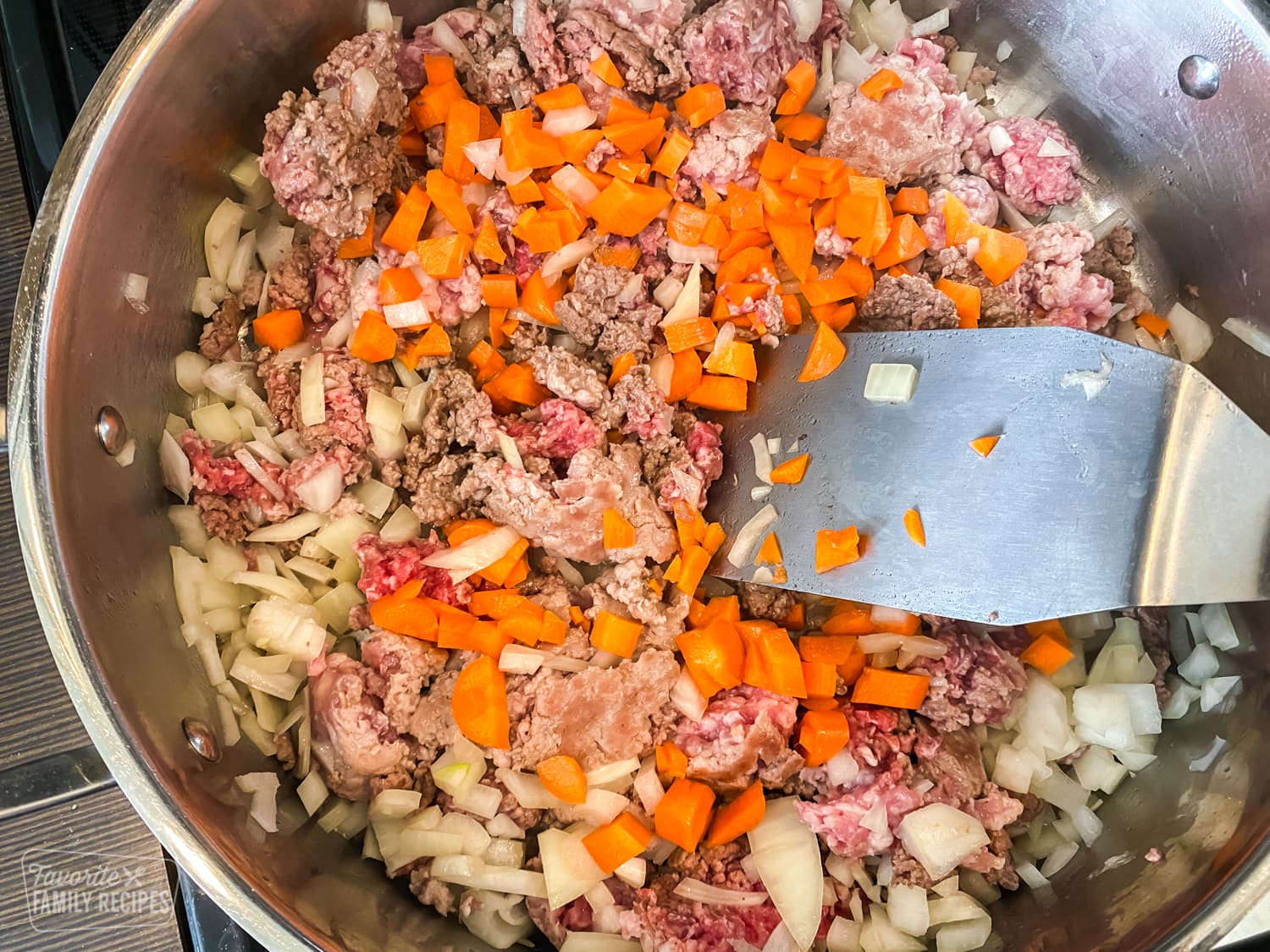
- When meat is browned and onions are soft, add tomatoes.
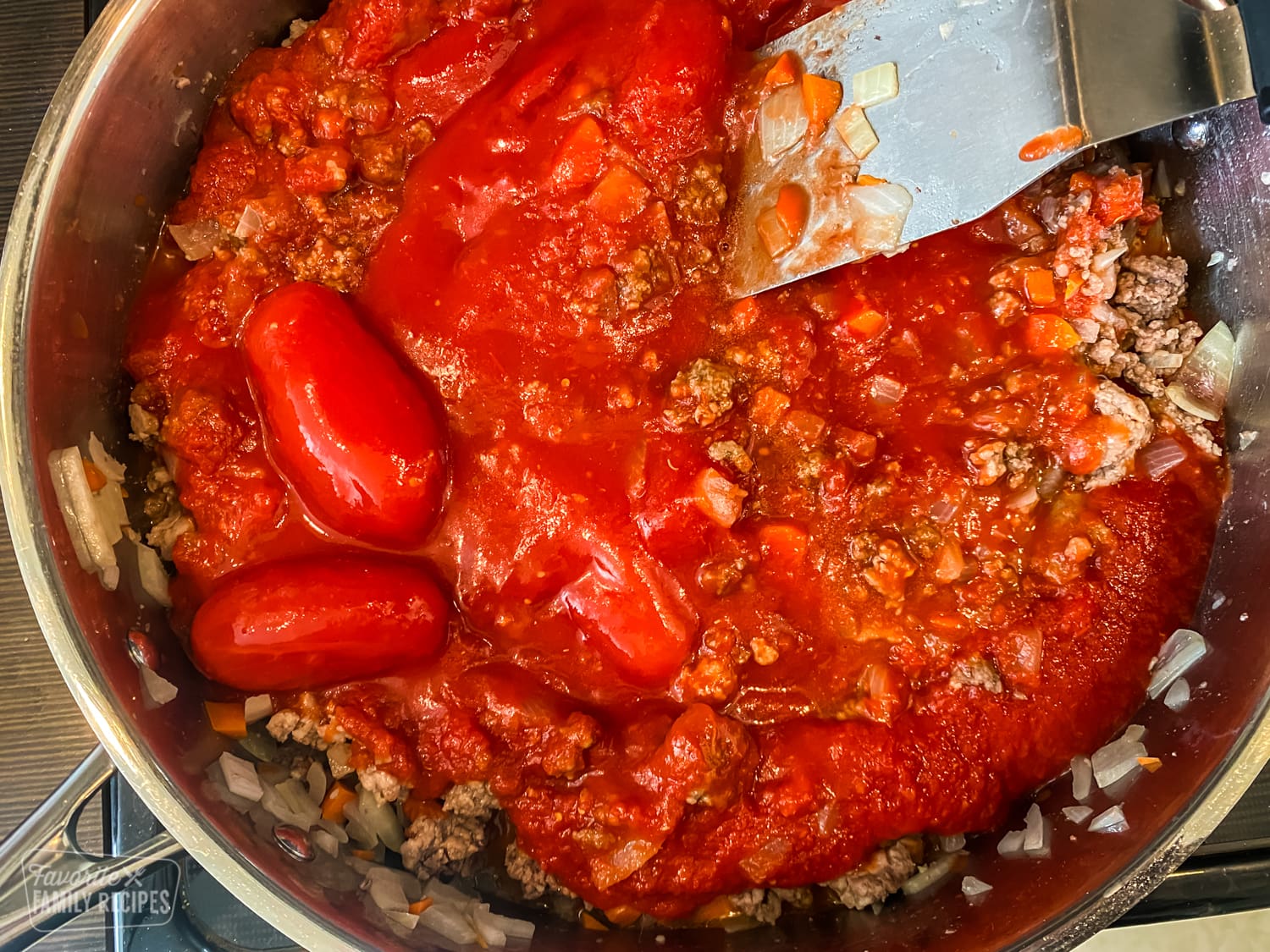
- When tomatoes have softened and have started to release their juices (about 4-5 min) add basil, sugar, salt and pepper (if you are using whole tomatoes, mash them with a potato masher or spatula to release all their juices).

- Simmer for at least 3 hours (and up to 6 hours), stirring occasionally. The longer you simmer, the better. Important: tomatoes burn easily, so keep an eye on them and add beef broth a little at a time to thin sauce if needed.
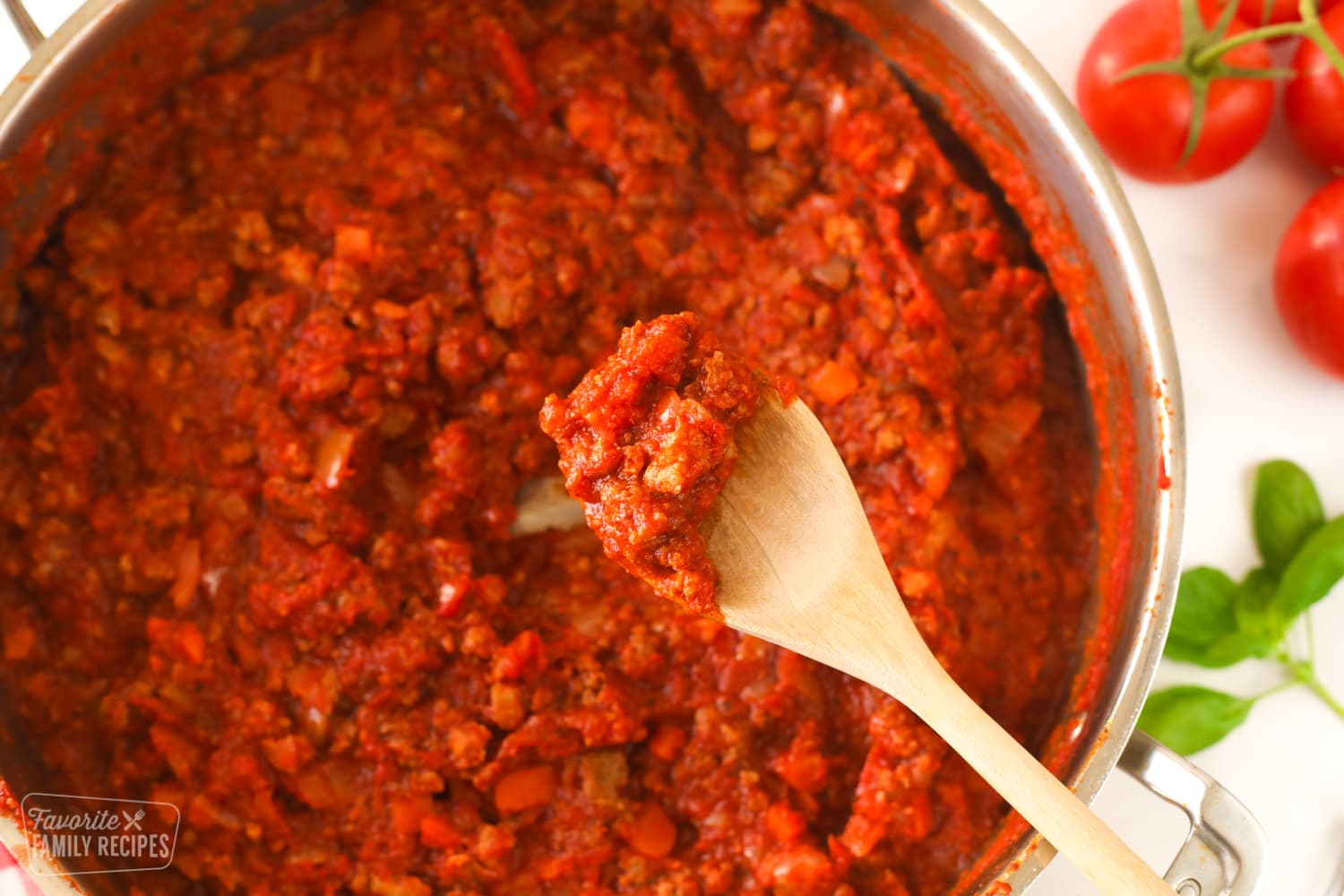
- In a large pot, cook spaghetti in salted water to al dente, drain completely and return to pot. Add sauce to the spaghetti noodles and toss until noodles are covered.
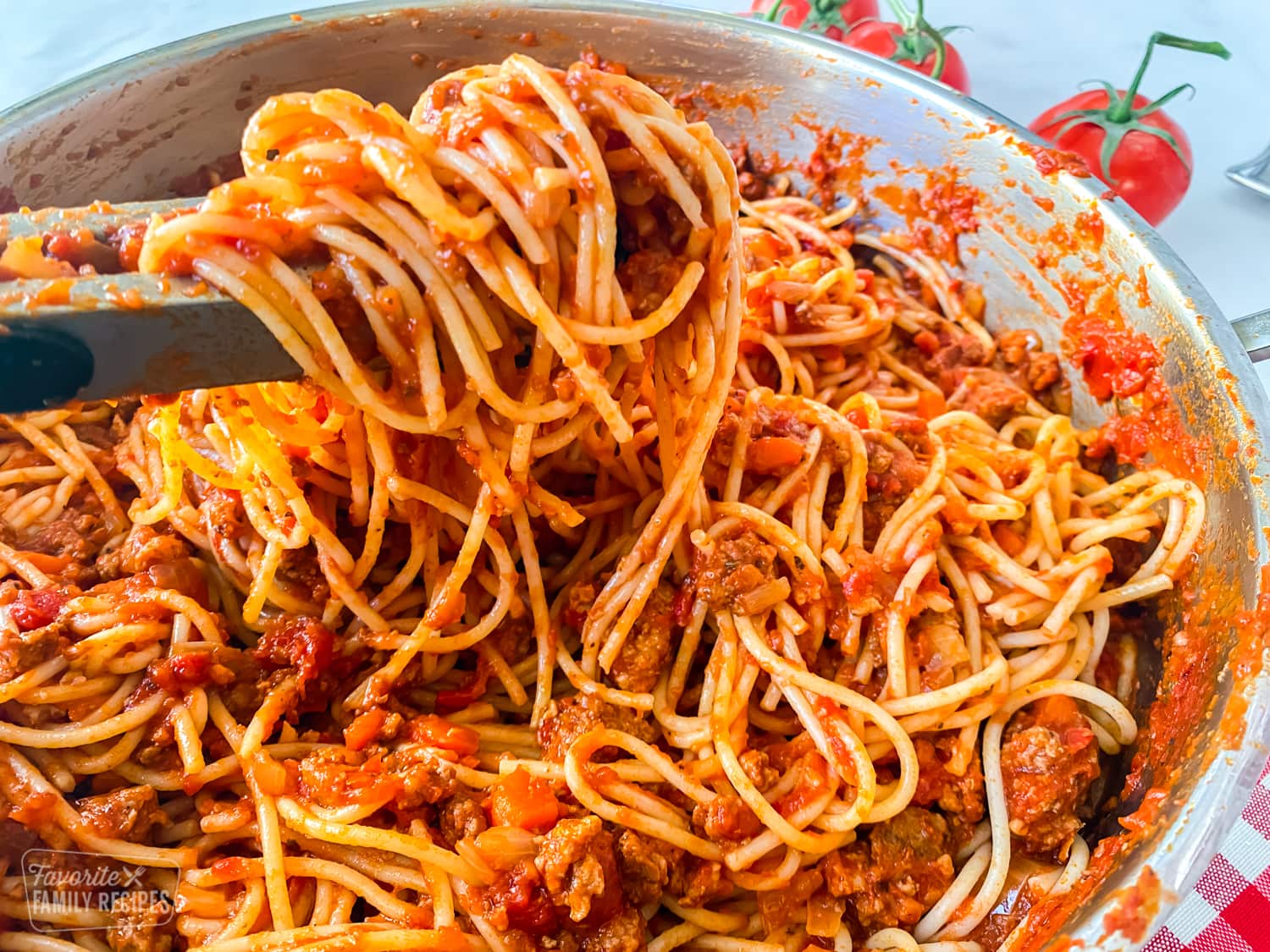
- Serve immediately.



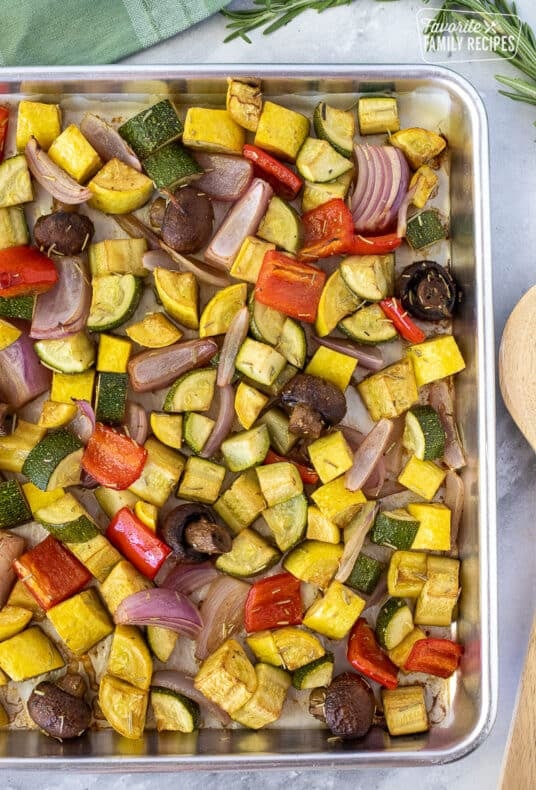
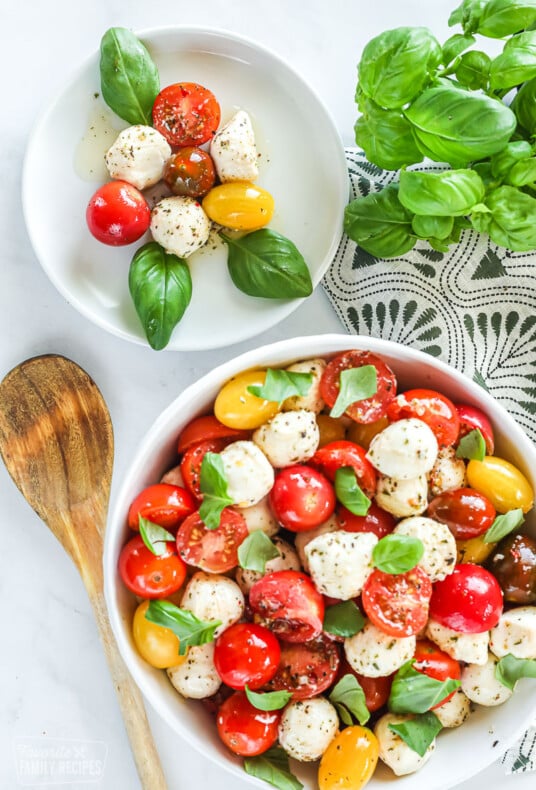
Amazing recipe thank you for providing. On the nutritional table, Is that based upon one serving and do you know what the serving size is?
The nutrition facts are based on 1 serving. There’s not an exact serving size, but it would be 1/6 of the total yield.
Please send me video how to make italian spaghetti and ingriedients.thank you
Here is a link to our YouTube video: https://www.youtube.com/watch?v=kCFQWoZ4g1E
carrot grated in my recipe is used to sweetin acidity of tomato mom always used baking soda Napoleon heritage. dry herbs always saute in olive oil two release their flavor then tomato paste. its must be cooked a bit to blend with additional tomatoes. eh to each his own. live n learn.
I don’t see garlic listed as an ingredient. Is this a mistake?
This recipe does not contain garlic – but you can certainly add some if you would like!
The instructions say to add carrots, onion and garlic to sauté but garlic isn’t listed in ingredients. I think that’s what the comment is aimed at.
Oh okay we will double check that recipe! Thanks!
Do you simmer uncovered or covered?
Covered, but if you want to reduce it down a little you can take the lid off.
Hi. How many cans of tomatoes? Like 2, 28 oz or is it the same pounds as in the recipe. Thanks?
One 28 ounce can should be enough!
Thank you! I just read the article it said one also. 🤦🏾♀️
Can this sauce be frozen for later use? Trying to meal prep before school starts up again thanks!
Yes, you can freeze this sauce for later use. Thanks for asking!
The ingredients were a bit extreme, but helpful in all.
Do you have to simmer for 3 hours?
In order for all the flavors to mingle and all the vegetables to break down, yes. It makes a huge difference!
My Spaghetti turned out perfect! Add your own little twist if you want and still can’t go wrong probably 💯🔥 thanks for sharing!
This was a hit! I read the reviews first and also put in four (large) garlic cloves. I had to use some canned diced tomatoes because I didn’t buy large enough Roma tomatoes and it was delightfully chunky. All my family members had seconds. I will be making this again!
Great recipe! Made this evening and my picky husband loved it! Will definitely make this again. My only issue is there was no mention of how much garlic to use. I added 4 cloves, and it turned out nice..
there can never be too much garlic, but I noticed that too!
As shown 07/18/2021, Garlic was omitted from author’s ingredient list.
I always add a poblano and a couple red bell peppers for a ‘deeper’ flavor.
Was really good. Made with fresh tomatoes. The addition of carrots surprised me, I don’t even remember noticing them as I ate the spaghetti. I will make again. Thanks!
This looks delicious. I agree, good tomatoes make such a difference.
You are right that here in Italy we mix the pasta and sauce together before serving. That way the pasta gets nicely coated in sauce. This ragu looks delicious. Hwoever, I would suggest you include an instruction to add salt to the pasta cooking water. It’s a very important step in Italian pasta recipes!
Spaghetti is always a hit in our house. Thank you for the great ideas!
Always a hit in our home; definitely adding this to my dinner line up for next week! Looks too good to pass up!
It does sound like an authentic recipe. Bookmarking to try later
We know you’ll love it! 🙂
don’t know if you tried this recipe with cherry tomato’s or not but they would not be the best for a substitute for plum tomato’s. Plum or Roma have the least seeds and most meat of any tomato and cherry tomato’s have the most seeds and least meat of any tomato. If you can’t find the imported plum’s I would suggest Roma’s.
Thank you for your suggestion – I will make that correction on the post. I appreciate your input!
Can red wine be used?
Sure!
Yeah but how much and when to add it?
Is cabernet sauvignon acceptable?
If I cook in a slow cooker would it be just as good
I would suggest following steps 1-3 as written and then transferring it to the slow cooker to simmer.
What a nice surprise to see carrots. My mom always placed diced carrots in her sauce. They add such a nice texture and adjusts the acidity perfectly.
So what is wrong with seeds?